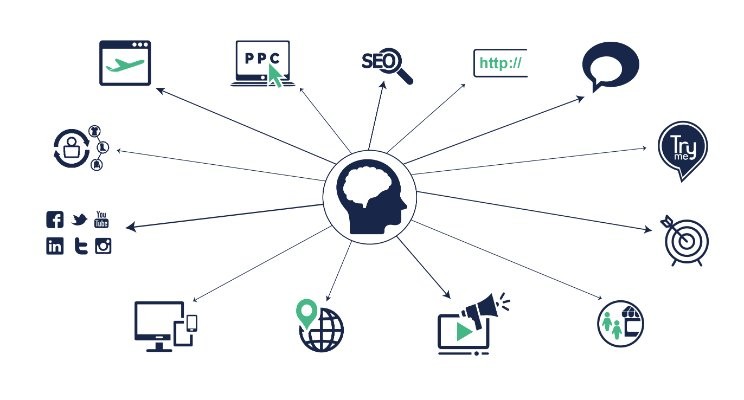
Inside-out branding. It's deeper than you think.
I was introduced to the concept of inside-out branding twenty-some years ago. It was at a new business summit for J. Walter Thompson and WPP The Store retail practitioners in North America and Europe.
I will always remember, and still like to use, a quote I learned about retail branding, marketing and communications at that summit:
“Don’t write a check the store can’t cash.”
In other words, don’t say things that aren’t true. Because you’ll quickly get caught when people come to the store and are disappointed. And say, or even worse, post bad things about the brand on social media.
The addition of this internal perspective – which both precedes and constrains external marketing and communications – permanently changed my worldview about branding. Within the JWT Retail Group, we began using the terms ‘promise keepers’ to describe the retail merchants, store ops and associates, and ‘promise makers’ for the retail marketing and advertising folks, as well as us at the ad agency.
It helped us understand and reinforce our interdependency, and reduce the typical 'us versus them' issues that often plague retailer/agency relationships.
Today, branding rightfully includes the discipline of internal marketing, along with a host of subject matter experts and specialty agencies. And I absolutely agree with the premise that internal marketing could be the single most important marketing we do, because:
“Employees are the brand, and entrenching them in the brand experience is the most effective way to build an army of loyal advocates.” *
Over the past several years, I’ve become convinced the principles of inside-out branding are equally true with B2C, B2B, digital, experiential and every other manner of branding, marketing and communications. Let me explain how I’ve come to this conclusion…
Everyone makes decisions emotionally, and then describes and justifies their decision with logic. And it’s true with everything from impulse goods in a checkout line, to the choice of which store to shop (“I felt comfortable there.”), college to attend (“The fit was right.”), and even whom to marry (“I knew he/she was the right one for me.”)
This universal human response is the foundation for all branding. Our heart/spirit is the promise keeper and our mind is the promise maker. Even though some may have difficulty admitting this truth, we are emotional creatures who are naturally attracted to, and turned off to, people, places and things. If they do not pass an initial likeability/ attraction filter, and do so quickly, they’ll never be considered.
As a proof point, consider the scenario when you’re at a social event and you meet someone new. Within less than a minute, your spirit says, “Nope, this person is not interesting.” So even thought their lips keep moving, you’re not listening to them. You don’t think about this response; it happens automatically.
The same thing happens when we encounter brands, particularly in store and online. We react and behave based on emotions. For example, a new OgilvyAction global shopper study found that:
“Shoppers are more impulsive in Hypermarkets (Mass Merchandisers) than in any other channel driven by the breadth and depth of products carried. As much as 50% of Shoppers buy more than they had planned before entering the store.” **
On the web, the six-second rule is an established fact. When people come to a site and bounce, it will likely happen in six seconds or less. Fortunately, Google Analytics measures all of this in real time, allowing us to test and learn how to say “Hello” to prospects more effectively, and convert more visitors into customers, by becoming more intrinsically interesting, attractive, relevant, etc.
(And with six-second ads coming to network TV, the same inside-out branding rules will soon apply to traditional mass media.) ***
To help start a conversation, here are three thoughts about advancing inside-out branding:
- Begin conducting emotional-based depth market research in parallel with existing logic-based consumer/customer research. And also begin compiling key differences and learnings between the two techniques.
- Conduct emotional-based depth market research internally, and begin to measure and track key internal versus external brand perceptions, along with attraction, engagement and loyalty triggers.
- Bring emotional-based depth market research into brand alignment efforts, and measure effects over time through KPIs like associate and customer satisfaction.
I trust that by now, you’re closer to understanding the notion of inside-out branding, and why it’s deeper than you might have thought.
I invite you to help make this idea smarter, so more of us - and more brands - can benefit. Thanks.
*cmo.com/why-internal-marketing-could-be-the-most-important-marketing
Regional Development Manager at Samex LLC
11moGreat read, Chris. Thank you. Going to share this with a few peers if you don't mind.
Branding Consultant | Creative Entrepreneur | Creative Professional Coach | Founder, Brand Design Masters, BONFIRE | Brand Strategy | Graphic Design | Content Creator | YouTuber | Podcaster | Speaker | ECD | VP of Design
5yGreat article Chris. So many retailers could benefit from focusing more deeply on the experience the in-store associate delivers - making sure that the "check the customer is looking to cash" is honored and delivered on. That "likeability" split-second brand experience acid test is one that so many retailers fail miserably.